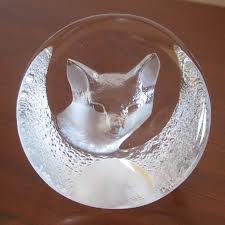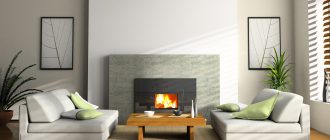Interested in Swedish glass art? Read our guide for more info on the history and development of this unique genre of Swedish art…
Swedish Modern décor is the inspiration for most of what is now described as Swedish vintage glass art. This influential glass art has had an affect on the art of glass making far beyond the borders of Sweden. Although the glass pieces that fall under this description can vary widely in many respects there are certain commonalities that help to define the style.
Many of the pieces that are characteristic of Swedish vintage glass art were created not just for “Art’s sake” but for a practical purpose as well. These included lamps, liquor containers and perfume bottles. The utilitarian nature of these items is responsible for the weighty feel that can characterize some Swedish vintage glass art.
Swedish glass is not merely art in name only however. Aside from the practical purposes which some of the pieces may serve there is an intentionality apparent in these pieces that bespeaks an artistic purpose. Perhaps this is most evident in the use of colors. The color in these typically translucent objects is bold, vivid and clear.
An exception to this tendency are items made of the now quite rare crackle glass where a natural looking wrinkle pattern found in this type of glass adds a new dimension to traditional vintage shapes. Glass makers such as Rainbow Art Glass did use the vintage glass art as a springboard for further self expression. The Viking “Epic” line that dates from the mid-sixties incorporated strikingly contemporary (for that time) shapes and themes. Mammoth floor vases with hand-pulled tips are much sought after by collectors to this day.
Ultimately the golden age of Scandinavian Modern art was affixed to the period stretching from 1950 to 1970. Early experimental pieces with decorative touches like straw yellow and light blue threads in a vertical pattern can fetch prices that approach $2,000 US.
A somewhat typical journey from the practical to a more aesthetically oriented approach might be exemplified by Uno Westerberg (1914-85). An architect by vocation, Westerberg was initially contracted by Swedish glassmakers, Pukeberg to design lighting. This was their stock-in-trade at the time. Westerberg was allowed to turn his attention to tableware and art glass by the 1950s with impressive results. A designer of buildings became, at least for a time, a creator of Swedish vintage glass art.
Golden ages never seem to last forever, of course. For a time artists such as Bo Borgstrom were seemingly allowed to design an astonishing array of artistic vases that delighted countless patrons of companies like Aseda Glasbruk. That firm was founded in Sweden in 1947. Bo Borgstrom began designing glass for Aseda in 1955. Aseda was swallowed up by the Royal Krona Group in 1974, which went bankrupt in 1977. The golden age may be over, but its creations remain.





